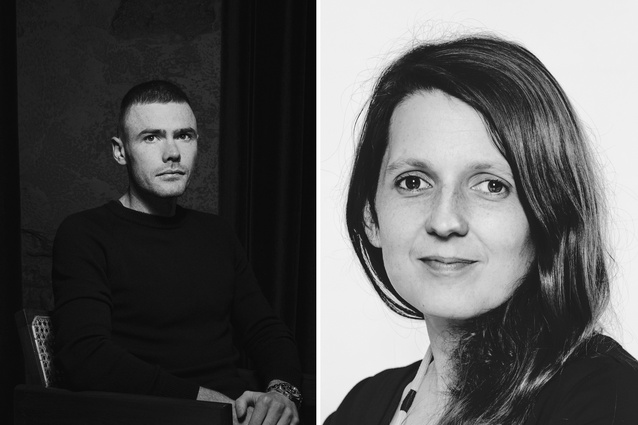Interiors on display
Auckland’s Objectspace gallery is set to open The Room, a daring exhibition of commissioned, residential interior installations designed by four top New Zealand designers, curators and artists. Federico Monsalve spoke to its two curators, Kim Paton and Rufus Knight, about the impetus for the show.
Federico Monsalve (FM): How did the idea for the show originate?
Kim Paton (KP): It was absolutely born from that deep love of mine for the diorama or staged scene. [In dioramas], there is often a lovely fusion between fact and fiction – this idea of trying to replicate something that existed in the world. I love that kind of strange, faux interior you might see at a trade fair or design show. It was also wanting to develop a design and exhibition strategy where we were able to work in a group context and have four different voices feeding into something. Quickly, we realised that a domestic scene or interior was a good anchor point for scale. At the same time, there could be this great conversation between design, architecture and the applied arts.
Rufus Knight (RK): What enthralled us about the exhibition was that we could explore ideas that we may not be able to explore. It is a self-driven brief but it has been guided by Kim and the other exhibitors. That has given us breathing space in a new context. We have had experience with trade shows – Salone del Mobile, ICFF and the Venice Biennale – each of which has a very commercial sensibility. It is interesting taking a step back and saying: “What if you had four artists do four stands at the Biennale? What would they do?” You take a fair like FIAC in France and, rather than having a booth from a gallery, what if the booth were created by the artist? What kind of environment would it be?
FM: How did you come about the other people who were involved in the project?
KP: What is reflected in the group is that we’re looking at working with different Pasifika and migrant communities, and spending time inside homes we previously have never been in. What you realise is that there is nothing quite like it – going into someone’s home and realising that you might instantly be transformed somewhere else. You realise the priorities around culture and the different ways that humans interact.
There is a lot of detail we are anchoring in right now. In terms of each curator coming to the space, there was no requirement that it look like anything in particular. For two of the rooms, both Knight Associates and Justine Olsen are actually commissioning Karl Fritsch, the amazing New Zealand jeweller. We are ending up with site-specific installation responses.
RK: Meanwhile, the other two have more of a diorama approach, where you are viewing through apertures or you are viewing objects within a space.
KP: You circle the perimeter to come in and out but they are all linked.
FM: Rufus, tell us about your own space.
RK: We are looking at quite an immersive experience within our quadrant. It will probably be strongly material-focused. The rationale from where we have come is that the domestic architecture and design markets create an incredible amount of waste and by-product. How can we re-purpose elements or parts of that, or specific materials from that process, and transpose them into the gallery context? How can we take something that is a by-product or a waste product or even a commonplace building material, and contextualise that into something that has an element of craft?
FM: So, something sculptural?
RK: Sculptural without being a sculpture. We are coming at it from a very immersive approach. I think that is how we work and how we think, and that is probably a real point of difference from the other exhibitors in the room. We are thinking spatially all the time. We think more about the constraints of the space rather than which objects are going in the space – that, for us, comes much later in the design phase. In the more conceptual phase, it is more about how we treat the whole thing.
FM: Were there any connecting threads or narratives that popped up and you weren’t expecting?
KP: I was surprised at the lack of objects but that is the delightful outcome. There is something very contained about it, even though we don’t know the dimensions exactly yet. You have this very structured amount of space to work with. The desire to respond to that in an architectural or spatial way makes great sense.
The Room will run from 5 April to 19 May 2019 at Objectspace, 13 Rose Road, Ponsonby, Auckland.
For more information, visit objectspace.org.nz.
This article first appeared in Interior magazine.











